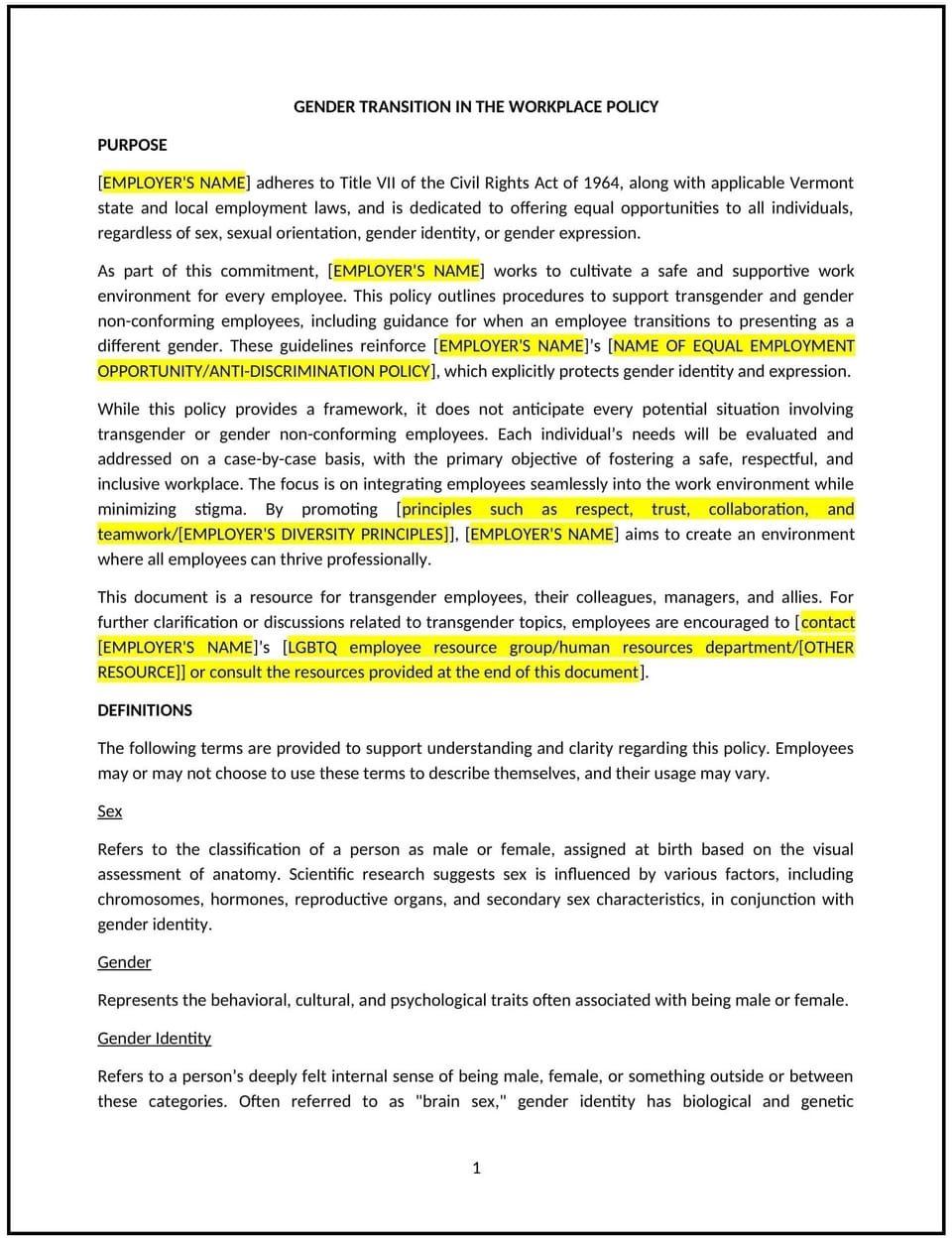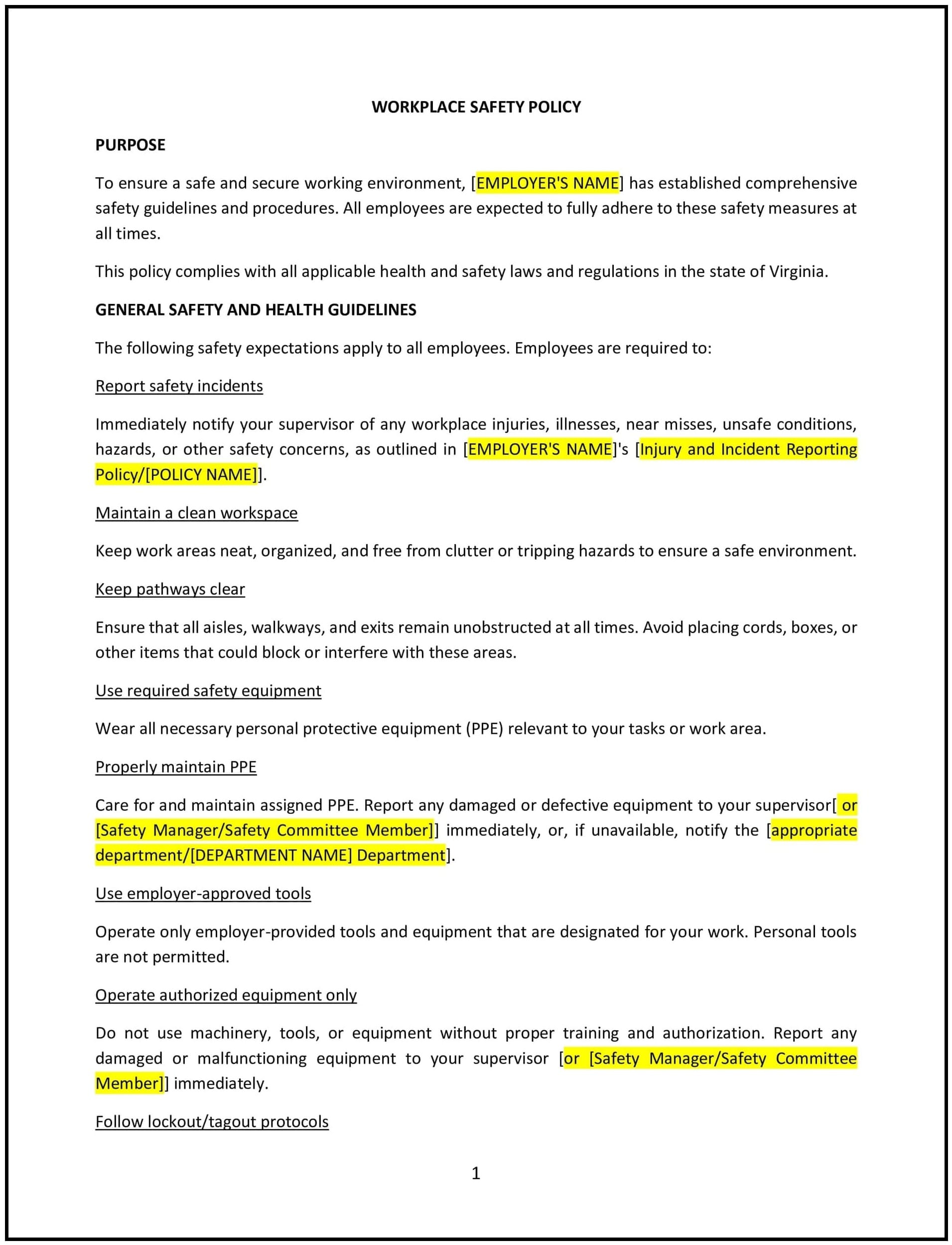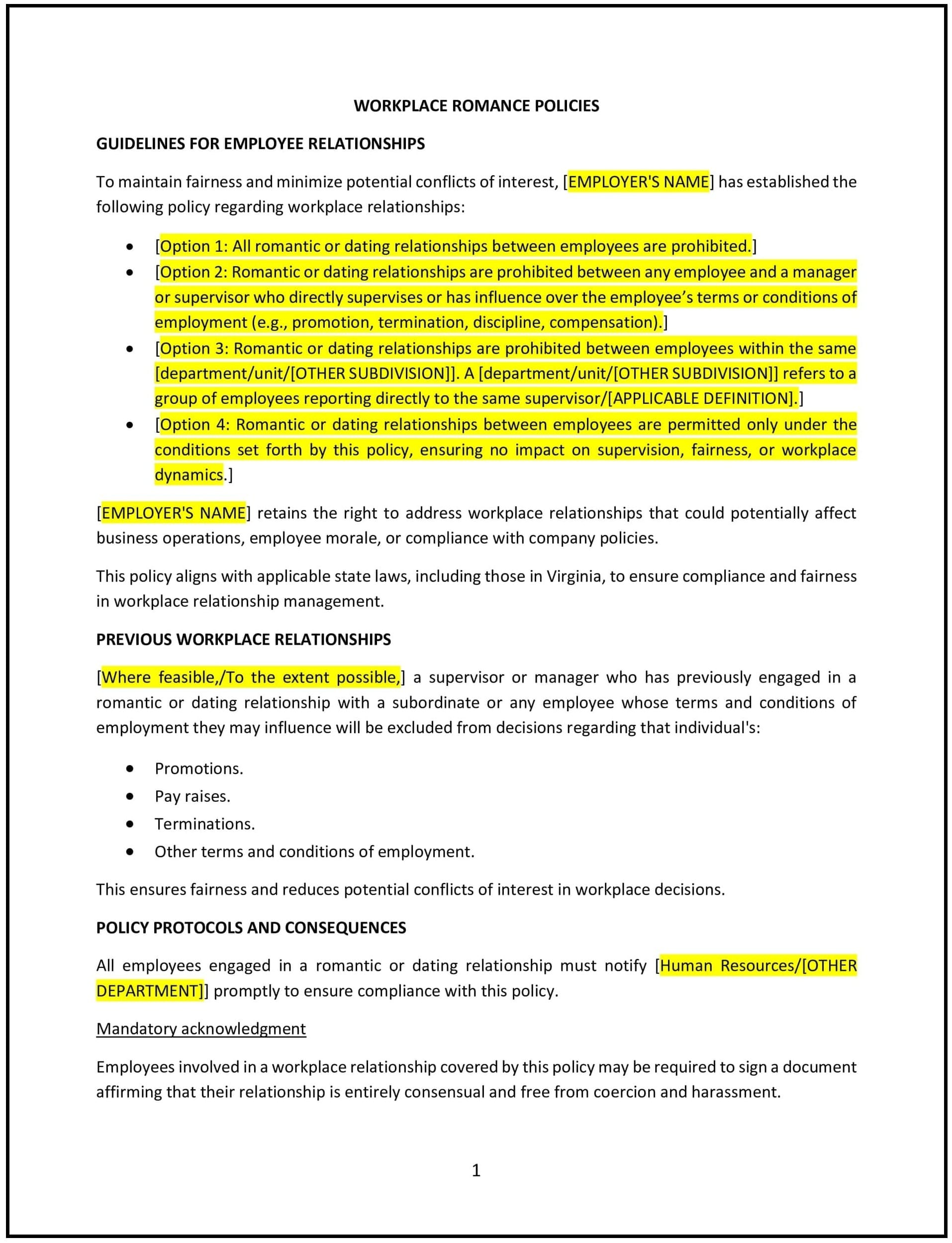Gender transition in the workplace policy (Vermont): Free template

Gender transition in the workplace policy (Vermont)
This gender transition in the workplace policy is designed to help Vermont businesses create an inclusive environment for employees undergoing a gender transition. It outlines guidelines for supporting transitioning employees, addressing workplace needs, and promoting compliance with Vermont’s anti-discrimination laws and federal protections.
By adopting this policy, businesses can foster inclusivity, enhance employee morale, and demonstrate a commitment to diversity and equity.
How to use this gender transition in the workplace policy (Vermont)
- Define gender transition: Specify what constitutes a gender transition, such as social, medical, or legal changes to align with an employee’s gender identity.
- Provide a supportive environment: Encourage open dialogue and offer resources to support transitioning employees, such as access to HR or a designated support person.
- Outline communication guidelines: Address how and when employees’ transitions will be communicated to colleagues, respecting the employee’s preferences and privacy.
- Include facility access: Ensure that transitioning employees can access restrooms, locker rooms, and other facilities consistent with their gender identity.
- Address name and pronoun use: Emphasize the importance of using an employee’s chosen name and pronouns in workplace communications and records.
- Include anti-discrimination protections: Reinforce that discrimination or harassment based on gender identity or expression is prohibited.
- Monitor compliance: Regularly review workplace practices to ensure alignment with Vermont laws and support for transitioning employees.
Benefits of using this gender transition in the workplace policy (Vermont)
This policy provides several benefits for Vermont businesses:
- Promotes inclusivity: Fosters a supportive environment for employees undergoing gender transitions.
- Enhances compliance: Aligns with Vermont’s anti-discrimination laws and federal protections for gender identity.
- Boosts morale: Demonstrates the company’s commitment to equity and employee well-being.
- Prevents discrimination: Establishes clear expectations for behavior and accountability in the workplace.
- Strengthens reputation: Reflects positively on the company as an inclusive and progressive employer.
Tips for using this gender transition in the workplace policy (Vermont)
- Communicate the policy: Share the policy with employees and include it in the employee handbook or internal systems.
- Provide training: Offer regular training on gender identity, inclusion, and respectful workplace practices for all employees.
- Respect privacy: Ensure that any information about an employee’s gender transition is handled confidentially and shared only with their consent.
- Encourage dialogue: Create a safe space for employees to ask questions and learn about gender inclusivity in the workplace.
- Update regularly: Revise the policy to reflect changes in Vermont laws, workplace practices, or best practices for inclusivity.
Q: What is a gender transition?
A: A gender transition involves social, medical, or legal changes to align an individual’s gender identity with their lived experience.
Q: How can the company support transitioning employees?
A: The company provides resources such as HR support, flexible leave for medical procedures, and training for colleagues to ensure a respectful environment.
Q: Are employees required to disclose their transition?
A: No, employees are not required to disclose their transition. If they choose to, the company will support them based on their preferences and needs.
Q: How are name and pronoun changes handled?
A: The company updates workplace records, email addresses, and communications to reflect an employee’s chosen name and pronouns.
Q: What happens if an employee experiences discrimination?
A: Any reports of discrimination or harassment are promptly investigated, and appropriate action is taken to ensure a respectful and inclusive workplace.
Q: Are coworkers required to use an employee’s chosen pronouns?
A: Yes, using an employee’s chosen pronouns is a basic form of respect and is required under this policy.
Q: How often is this policy reviewed?
A: This policy is reviewed annually or whenever significant changes occur in Vermont laws or workplace practices.
Q: Does this policy apply to contractors and vendors?
A: Yes, all individuals interacting with the company are expected to adhere to the principles outlined in this policy.
This article contains general legal information and does not contain legal advice. Cobrief is not a law firm or a substitute for an attorney or law firm. The law is complex and changes often. For legal advice, please ask a lawyer.


